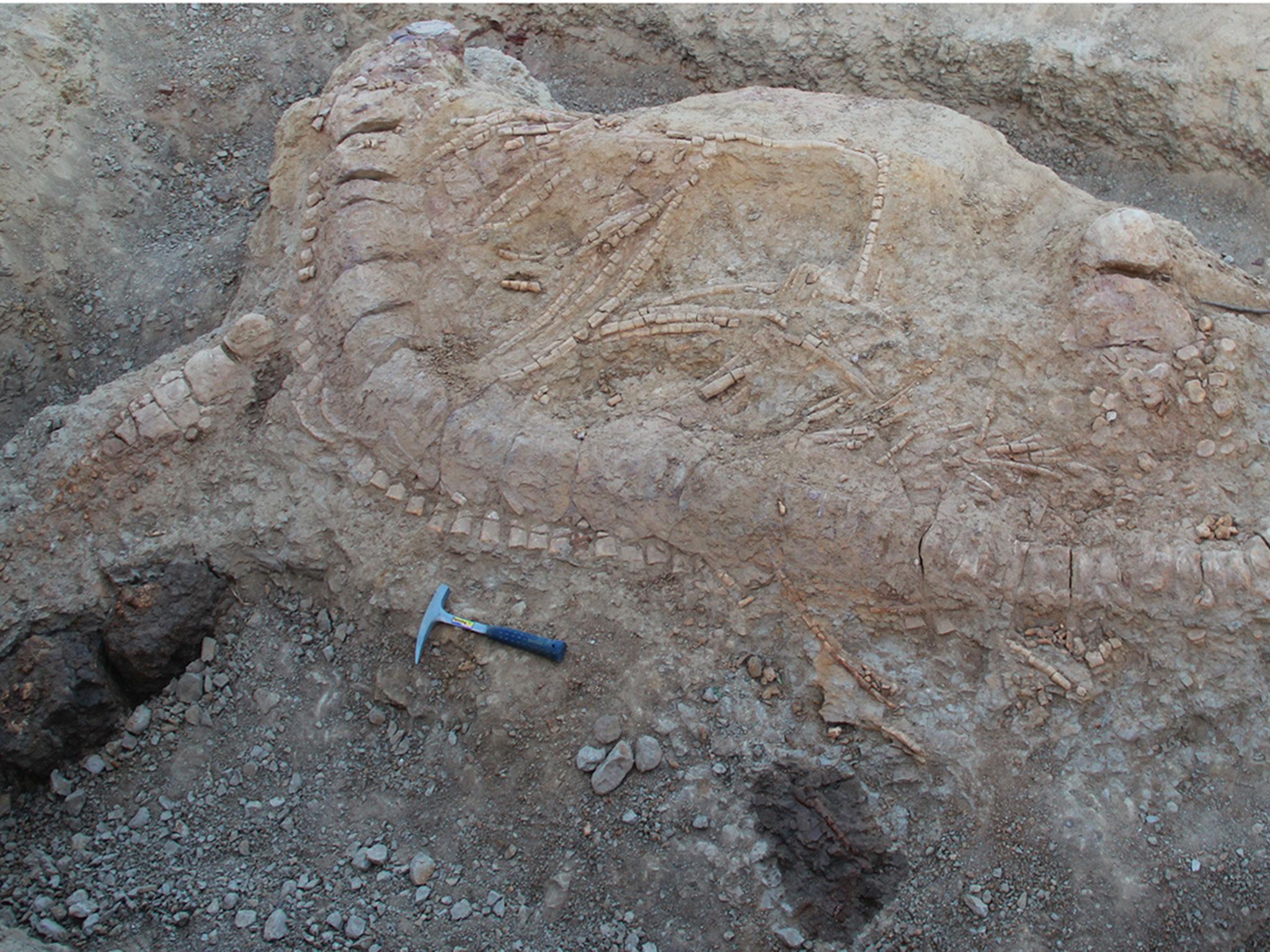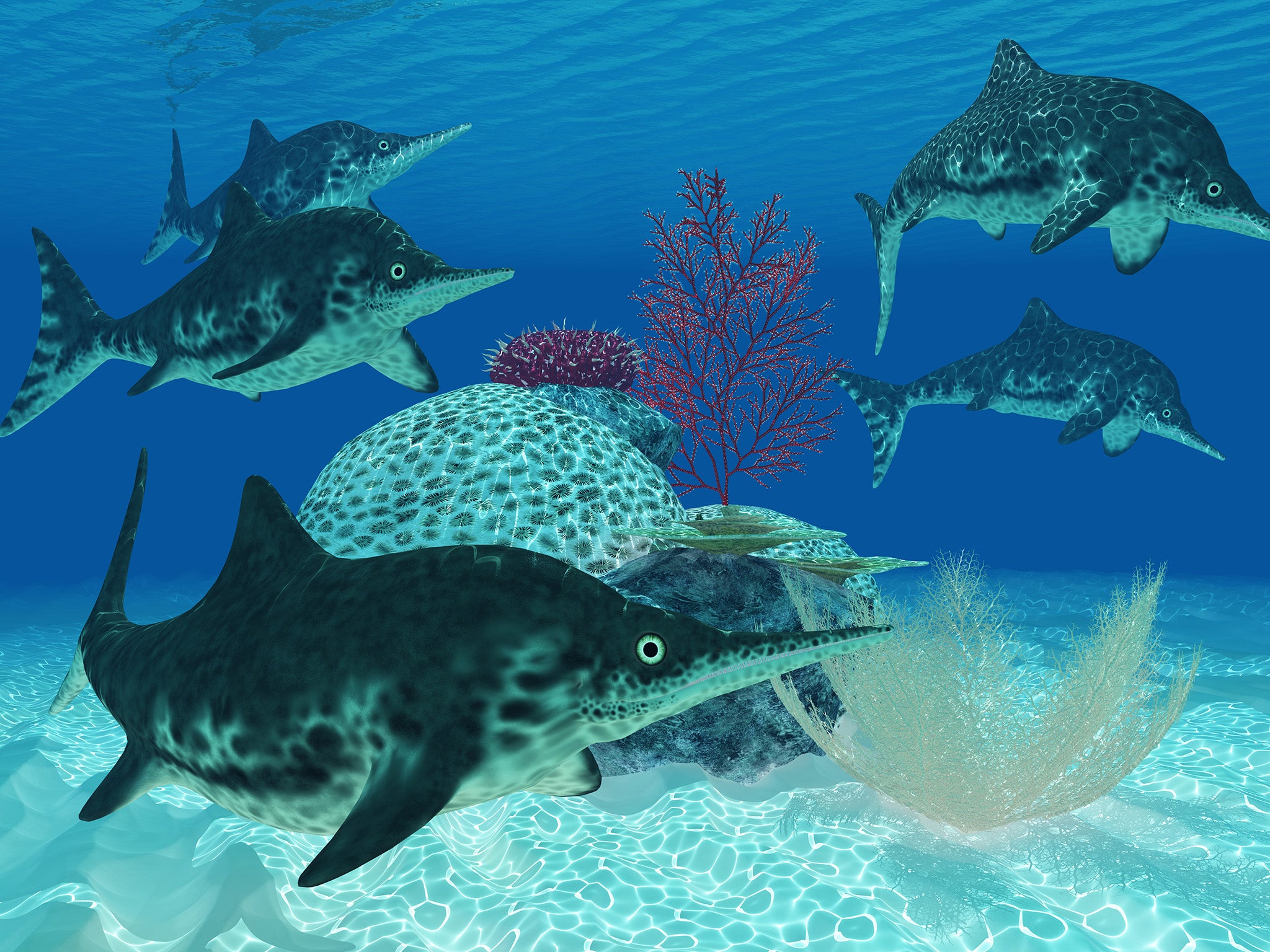'Sea monster' dating back 150 million years discovered in India
Examination of the marine reptile's teeth revealed it likely ate shelled marine animals

Scientists have discovered the fossil of a 152-million-year-old Jurassic ichthyosaur in India.
The remains of the 5.5-metre-long reptile was found inside rocks from the Mesozoic era in the western state of Gujarat.
The remarkably intact specimen was unearthed after 1,500 man-hours of digging. Only parts of the skull, fin and tail bones are missing.

Examination of the marine reptile's teeth revealed it likely ate shelled marine animals such as ammonites.
It is hoped the fossil, first unveiled in the journal PLOS ONE, will help palaeontologists understand how the marine reptiles evolved and spread across the world.
“Vertebrate fossils are rare from the Kachchh region, and we were expecting only bone fragments from this area,” Guntupalli Prasad, the lead author of the study, told PLOS Research News, which is affiliated with PLOS ONE. “So to find a near-complete skeleton is surprising as well as exciting.”
Mr Prasad said ichthyosaurs, or "fish lizards", resembled modern dolphins and whales and lived between 250 and 90 million years ago.
"Their main marine competitors were plesiosaurs, another group of marine reptiles, and sharks," he said. "While the dinosaurs were dominating the land, the pterosaurs, flying reptiles, were the rulers of the air."
In a statement, the team said the specimen might reveal whether there was a marine connection between India and South America around 150 million years ago.
Join our commenting forum
Join thought-provoking conversations, follow other Independent readers and see their replies
Comments